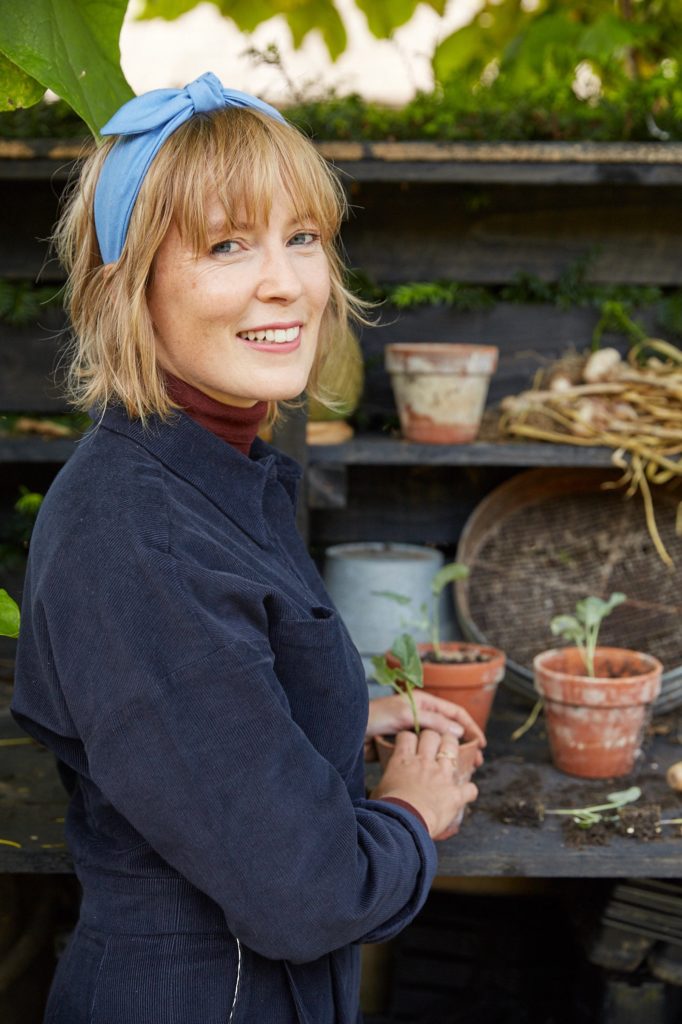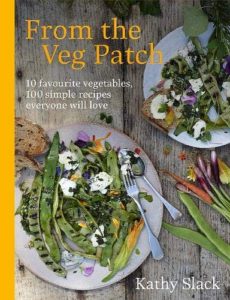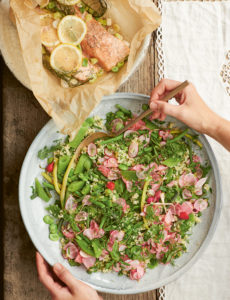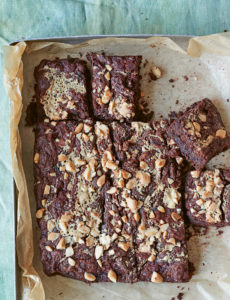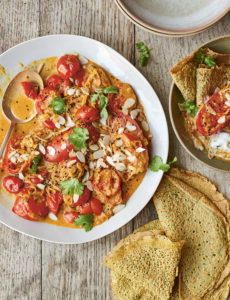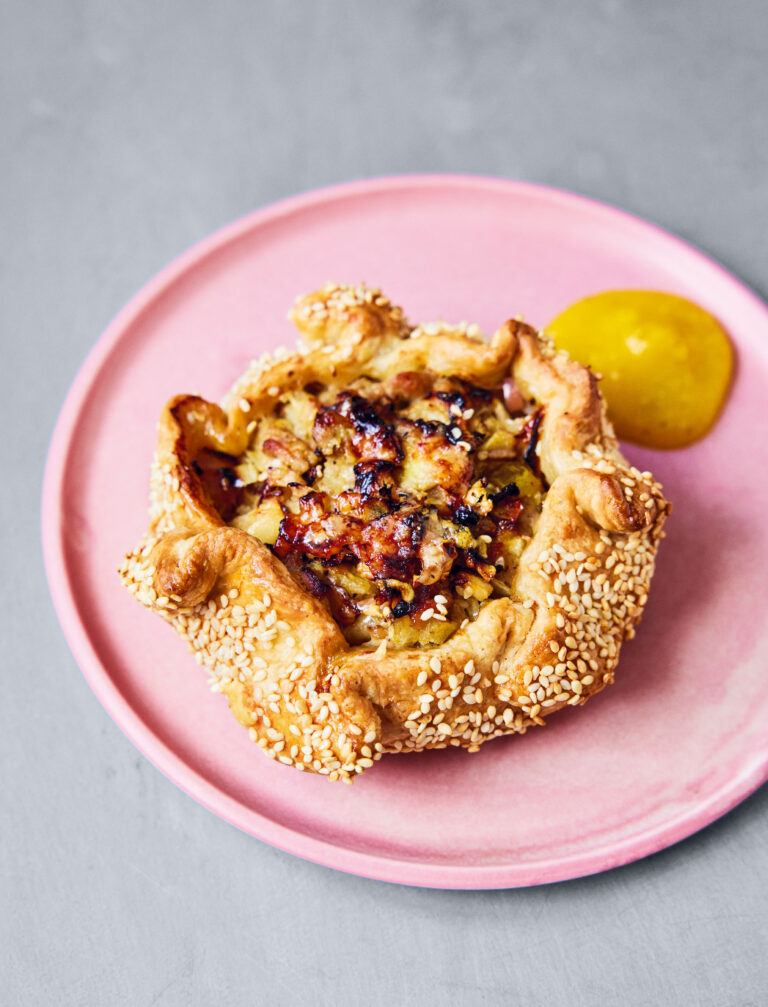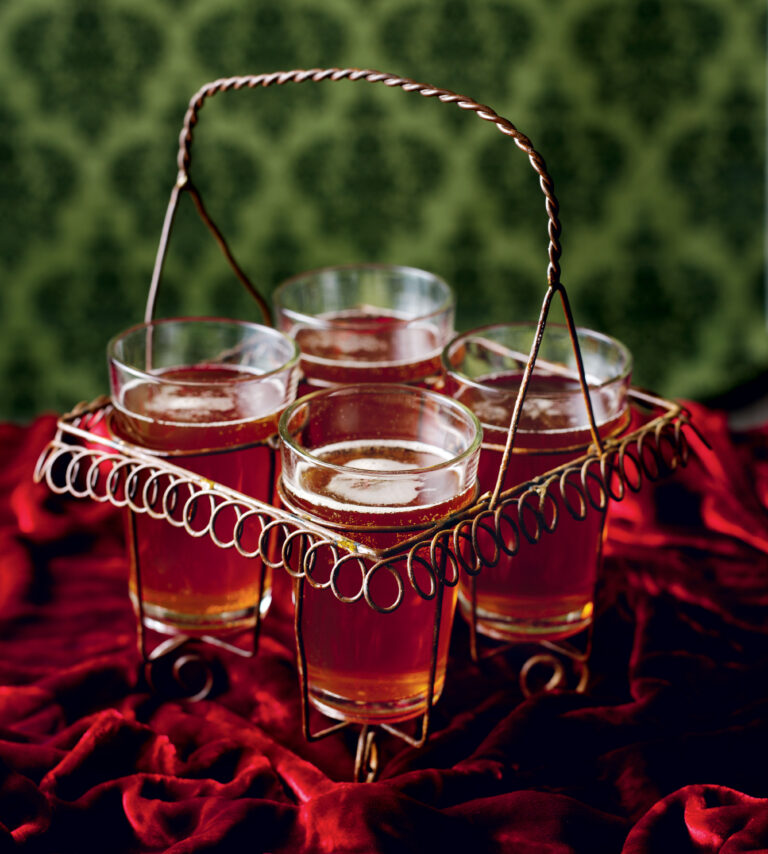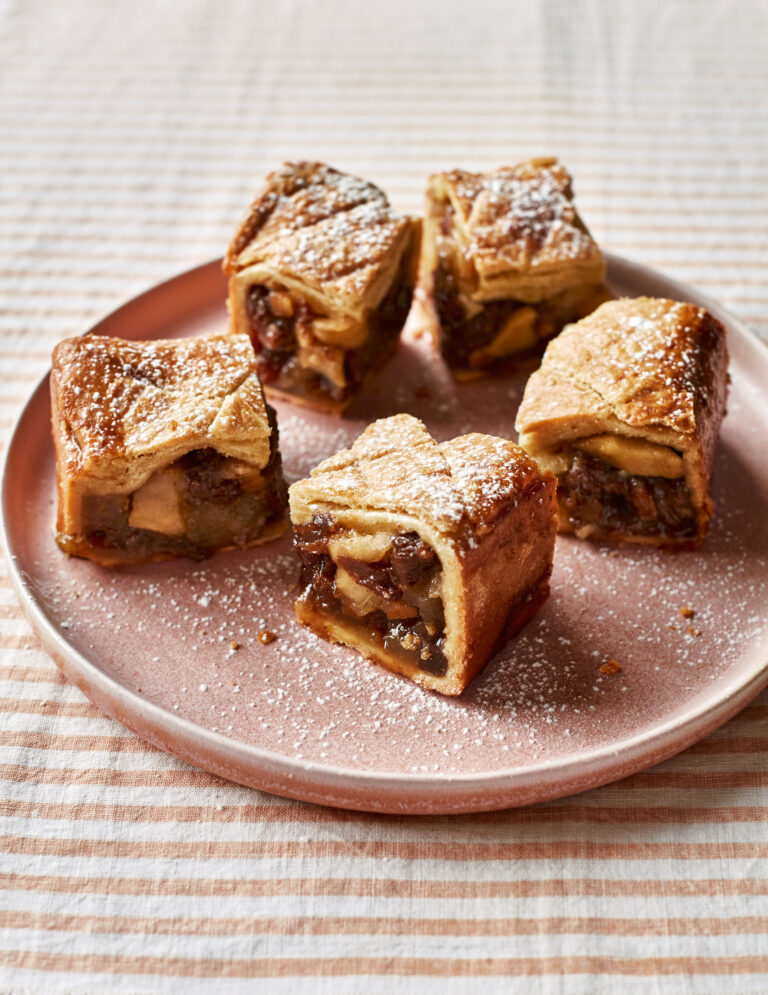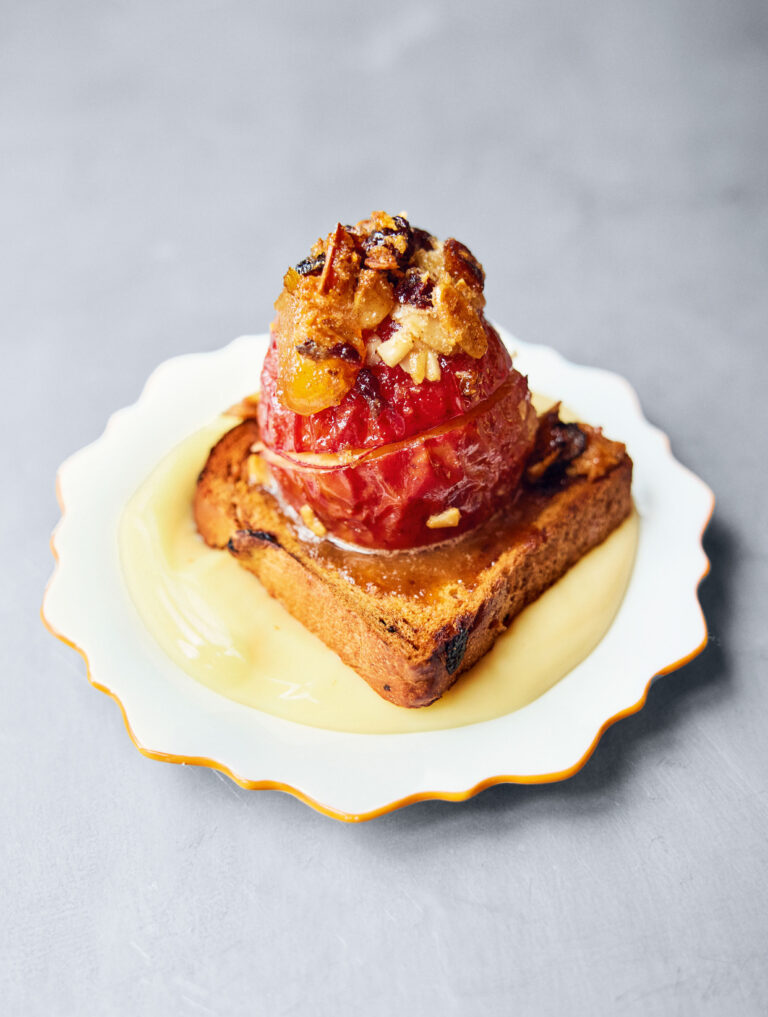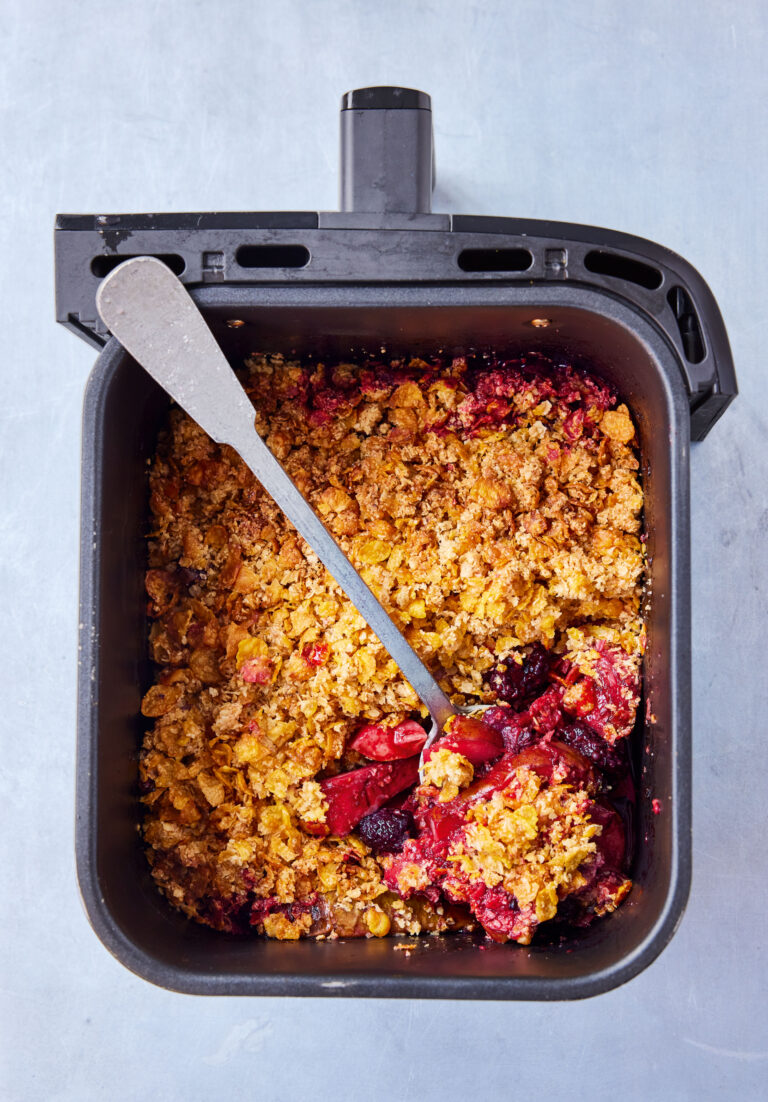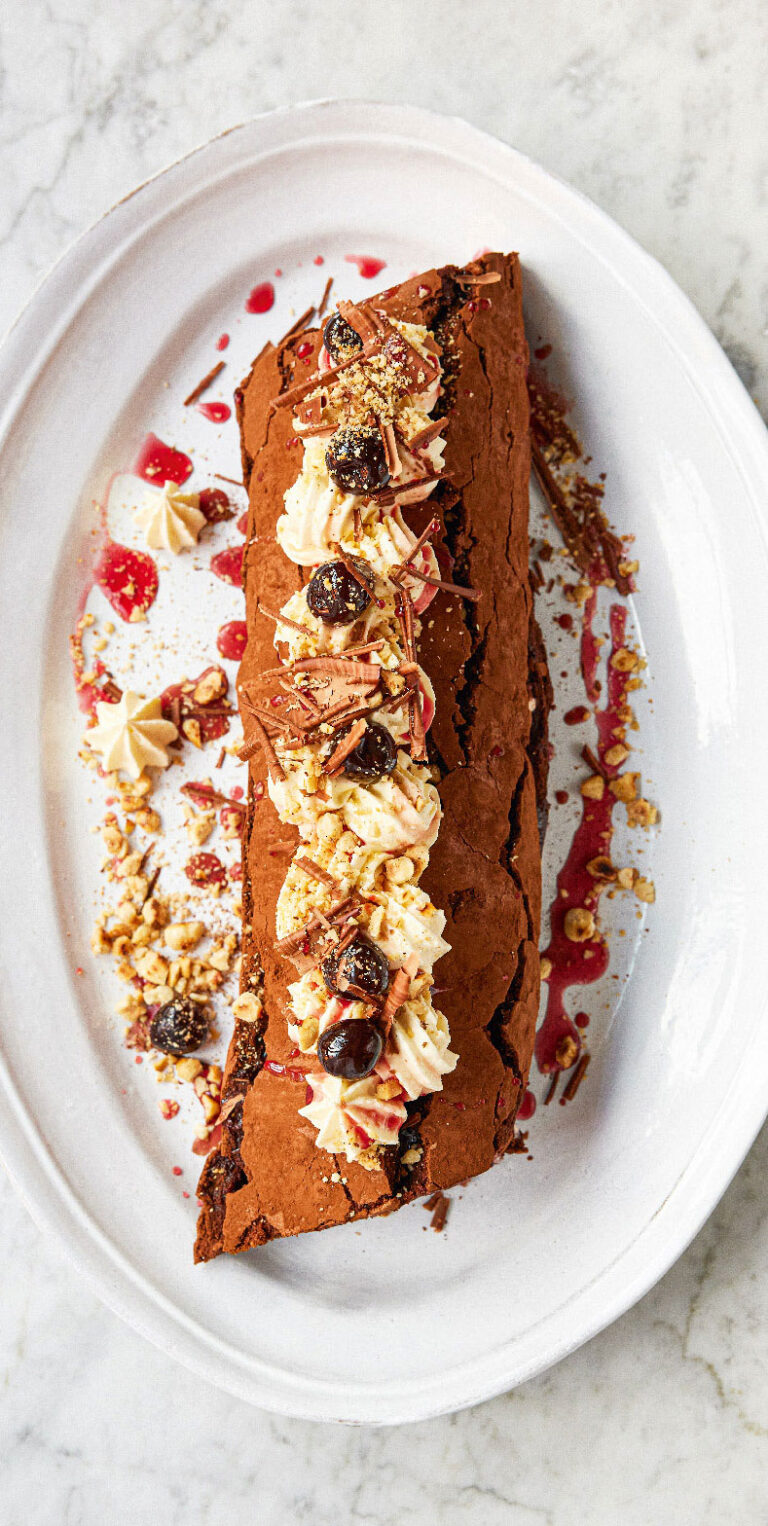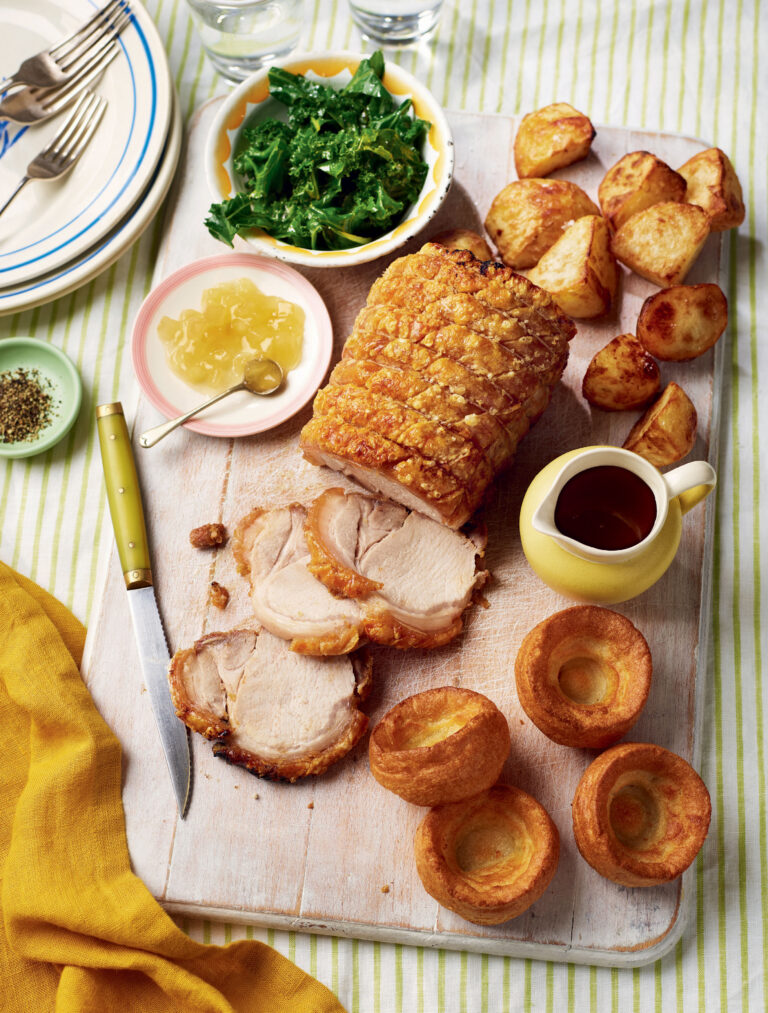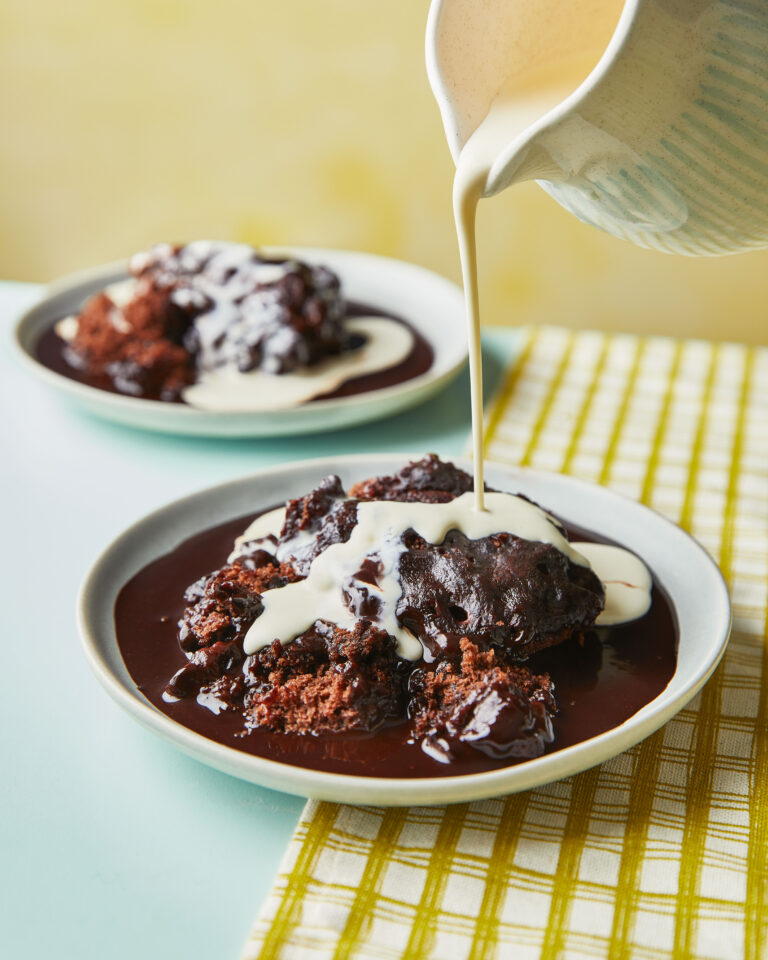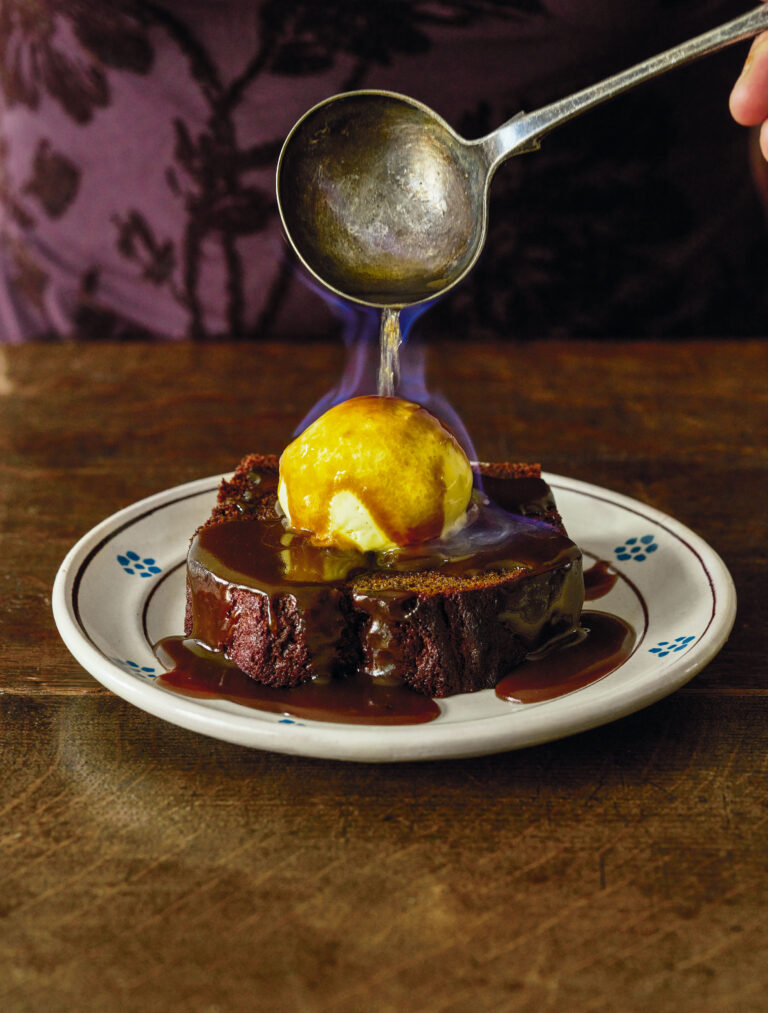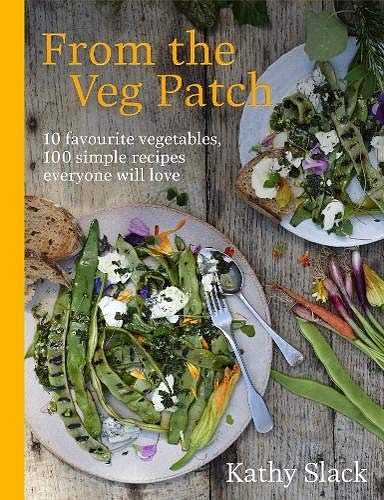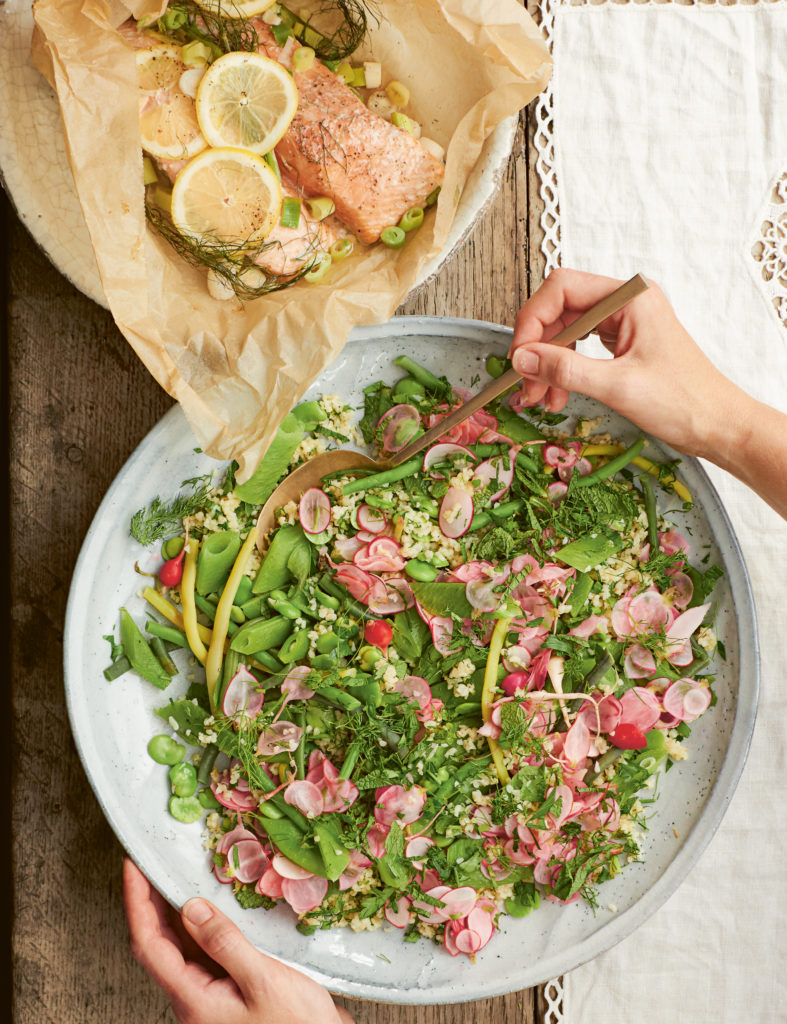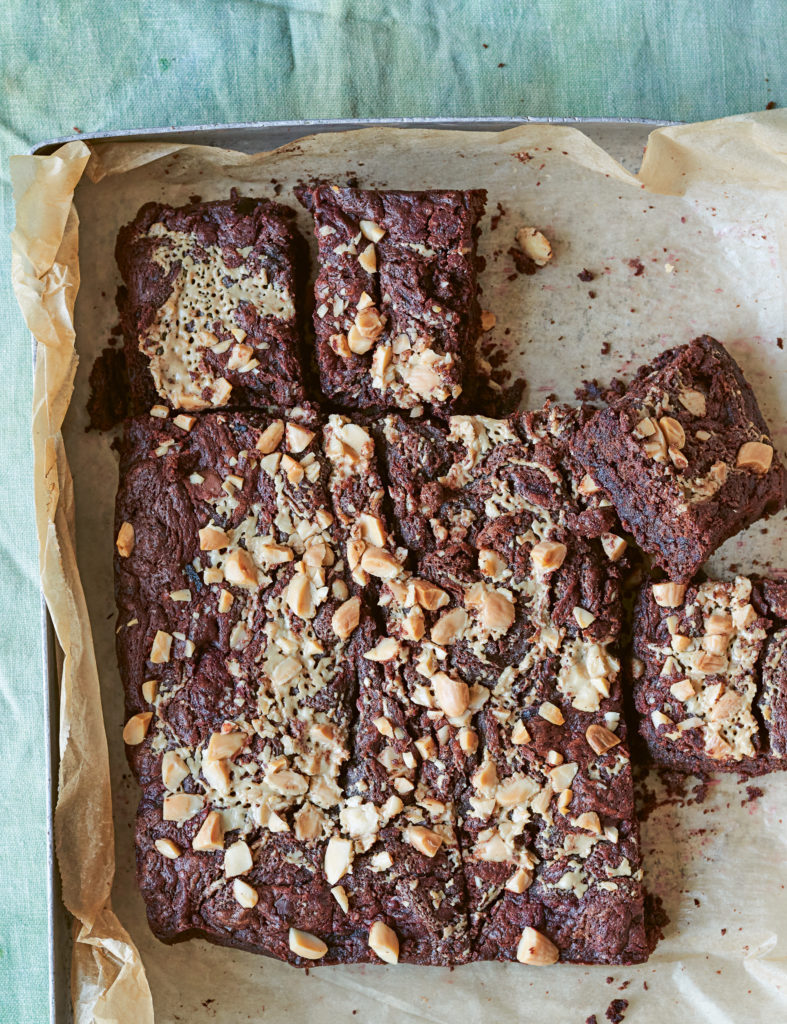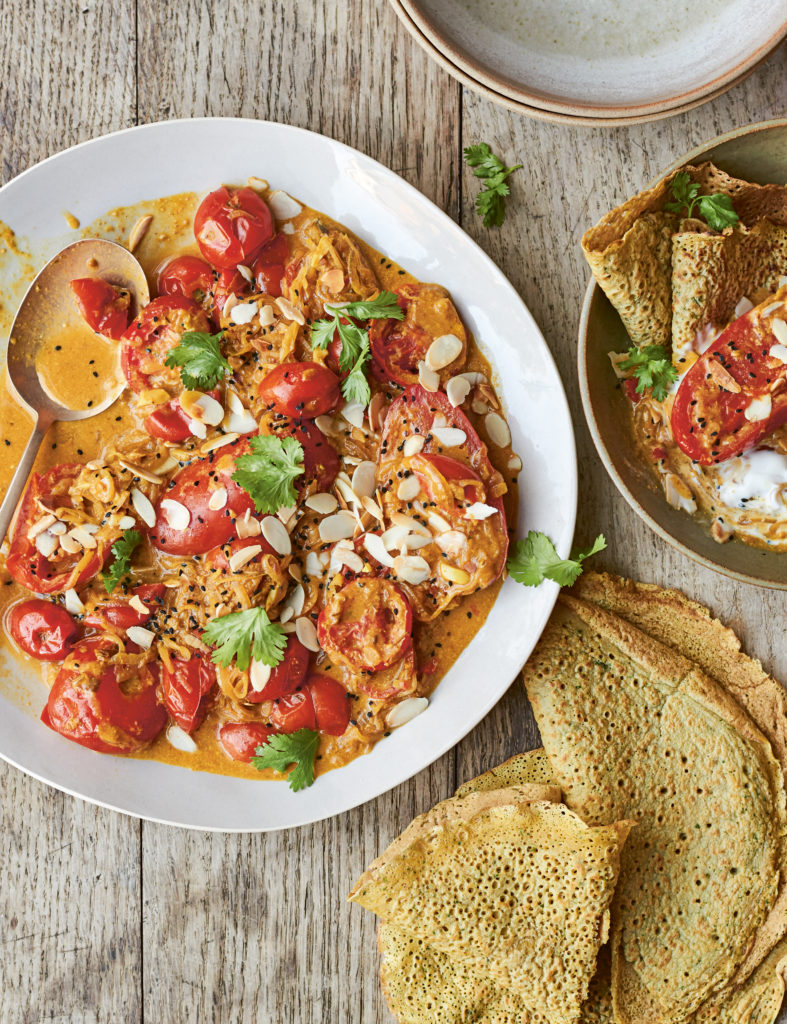Apple Butterscotch and Hazelnut Pavlova with Boozy Cream
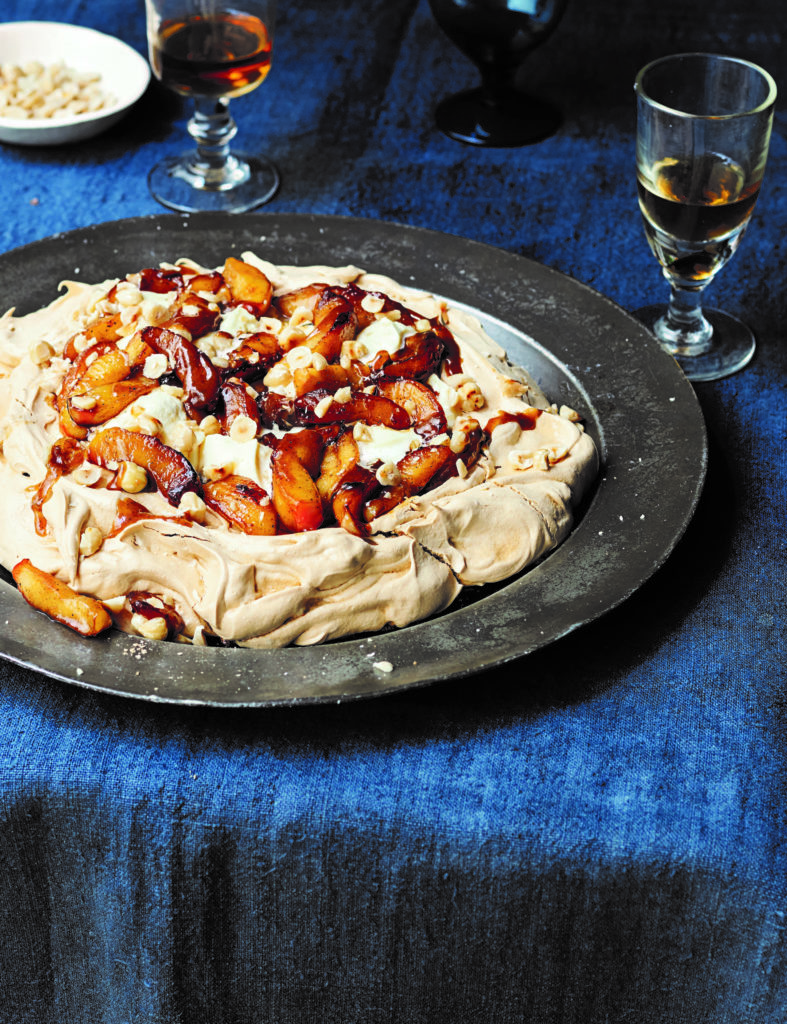
This autumnal pavlova is topped with boozy whipped cream, caramelised apples, butterscotch, and toasted hazelnuts.
From the book
Buy From
Introduction
I’m going to be quite particular about using the exact ingredients for this recipe. The brown sugar and golden caster sugar, for example, create those fudgy, caramel notes that marry the apples and hazelnuts in treacly harmony. A meringue made with white sugar would be pale in both hue and humour by comparison. Similarly, the hazelnuts must be blanched, rather than skin-on, and need to be roasted for their flavour to penetrate the meringue. The Kingston Black Apple aperitif, which is available online, is a sweet aperitif made from Somerset cider and apple juice. It is quite unique – sweet but not cloying, fresh but not thin – and fits neatly with the whole autumn orchard/hedgerow story of this dish. I am prepared to make a small allowance here, though: cream sherry or Pedro Ximénez sherry are, when in dire need, acceptable substitutes, but only in a serious pavlova emergency.
You can make eight individual pavlovas or one large one, and instructions for both are included. The single pavlova will have a more marshmallowy heart than the individual ones, but both should be crispy on the outside and soft within. Either way, they will keep for 2–3 days at room temperature in an airtight container.
Ingredients
| For the pavlova(s): | |
|---|---|
| 40g | blanched hazelnuts |
| 120g | egg whites (about 3 egg whites) |
| 150g | soft light brown sugar |
| 35g | golden caster sugar |
| 1 tsp | white wine (or cider) vinegar |
| 1 tsp | cornflour |
| For the topping: | |
| 70g | blanched hazelnuts |
| 5 | large, firm, crisp eating apples |
| ½ | lemon, juiced |
| 100g | butter |
| 50g | golden caster sugar |
| 500ml | double cream |
| 5 tbsp | Kingston Black Apple aperitif |
| 40g | icing sugar |
Method
Preheat the oven to 220°C/200°C fan/gas mark 7.
Tip the hazelnuts, both for the pavlova(s) and the topping, onto a baking tray and roast for 8–10 minutes until golden. Remove from the oven, cool slightly, then roughly chop and set aside to cool completely. For the meringue mixture, it’s vital that the nuts are only roughly chopped and stone-cold before they are used. Warm, finely chopped hazelnuts will release their fat into the meringue, causing it to go runny: disaster.
Reduce the oven temperature to 140°C/120°C fan/gas mark 1. If you are making a large pavlova, line 1 baking tray with baking parchment. If you are making individual pavlovas, line 2.
For the pavlova(s), put the egg whites in the scrupulously clean bowl of a freestanding mixer and whisk to soft peaks (or use a hand-held electric whisk instead). Mix the sugars together (making sure there are no clumps) and add to the egg whites, a spoonful at a time, whisking all the while. Whisk for a minute or two more until the sugar dissolves (check by rubbing the mixture between your fingers: if it feels grainy, whisk some more).
Use a spatula to gently fold in the vinegar and cornflour. Once combined, add 40g of the chopped hazelnuts and fold in gently (a reminder: it is very important that the roasted hazelnuts are cold, only roughly chopped and folded in by hand, otherwise the meringue will fail).
For individual pavlovas, spoon 8 circles of the meringue mixture onto the 2 lined baking trays (use a bit of the mix to glue the baking parchment in place), making a little divot in the middle of each meringue to hold the filling later. Leave a decent gap between each one; they expand when cooked. Bake for 30 minutes, then turn the oven off, but leave the pavlovas in the oven for another 30 minutes. Then remove from the oven and leave on their trays to cool at room temperature.
For 1 large pavlova, spoon all the meringue mixture onto the lined baking tray and smooth into a fat circle roughly 20cm in diameter. Bake for 1½ hours, then turn the oven off and leave the pavlova inside until both it and the oven are cool. I know people sometimes get upset if their meringue cracks at this stage, but don’t fret if it does – I prefer this more relaxed look anyway.
Now for the apples: peel, core and slice them into eighths. Toss the wedges in the lemon juice to stop them browning.
Melt the butter in a large frying pan over a medium-high heat. Add the apple wedges, trying to get as many flat edges in contrast with the pan as space allows, and fry, without moving, for 5–6 minutes until the wedges are golden brown on one side but their centres remain firm. Flip the apples over. Sprinkle over the golden caster sugar, reduce the heat a little (to stop the sugar burning) and fry for a further 5 minutes. The sugar will dissolve and caramelise in the butter, and the apple juices will make an apple-y butterscotch sauce. Stir everything together gently to coat the apples and disperse any last grains of sugar, then tip into a heatproof bowl and set aside. Next, pour the cream into a large bowl and add 3 tablespoons of the Kingston Black Apple aperitif. Whip the cream until it is thick and the whisk leaves ribbons on the surface. Sift in the icing sugar, add the remaining Kingston Black and whisk until it forms soft peaks. (Adding the alcohol in stages helps prevent the cream from curdling.) Go carefully: it will thicken further once you stop whisking. Better to under-whip and have soft billows of boozy cream than to over-whip and have crumbly, craggy daubs. Check the balance of sweetness to booze and adjust according to your constitution.
To serve, spoon a lavish pillow of cream onto the pavlova(s), then arrange the apple wedges on top, making sure plenty of butterscotch sauce runs seductively down the side of the pavlova(s). (Should the sauce set as it cools – which can happen if your apples aren’t especially juicy – just warm it very slightly before loading up the pavlova). Sprinkle with the remaining chopped hazelnuts and serve.
Reviews
1 Ratings
Have you tried this recipe? Let us know how it went by leaving a comment below.
Thank you for your rating. Our team will get back to any queries as soon as possible.
Please note: Moderation is enabled and may delay your comment being posted. There is no need to resubmit your comment. By posting a comment you are agreeing to the website Terms of Use.
